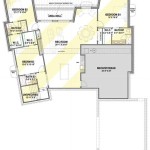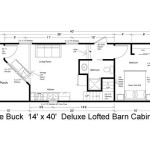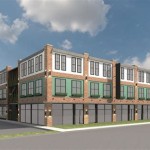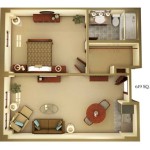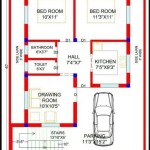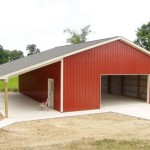Understanding House Plans and Build Costs: A Comprehensive Guide
Embarking on the journey of building a house is a significant undertaking, requiring careful planning and a solid understanding of the associated costs. At the core of any successful construction project are the house plans and a meticulously crafted budget. These two elements are inextricably linked; the complexity and size of the house plan directly influence the overall build cost. This article provides a comprehensive overview of house plans, the factors that affect build costs, and strategies for effectively managing your budget throughout the construction process.
House plans serve as the architectural blueprint for your future home. They provide detailed specifications for the layout, dimensions, materials, and construction methods to be employed. These plans are crucial not only for obtaining building permits but also for ensuring that the construction team understands the homeowner's vision and can execute the project accurately. A well-defined set of plans minimizes the risk of errors and misinterpretations during construction, which can ultimately save time and money.
Build costs, on the other hand, encompass all the expenses incurred from the initial site preparation to the final finishing touches. These costs are influenced by a wide range of factors, including the size and complexity of the house, the materials used, the location of the project, and the labor market conditions. A realistic and well-researched budget is essential for preventing financial strain and ensuring that the construction project stays on track.
Key Point 1: Decoding House Plans and Their Impact on Costs
House plans are more than just drawings; they are comprehensive documents that outline every aspect of the building project. A standard set of house plans typically includes several different types of drawings, each serving a specific purpose. These include:
Site Plan: This plan illustrates the location of the house on the property, including setbacks, easements, and existing features like trees and utilities. The complexity of the site can significantly impact costs. For example, a sloping lot may require extensive excavation and retaining walls, increasing expenses.
Floor Plans: These plans show the layout of each floor, including the dimensions of rooms, the placement of doors and windows, and the location of plumbing and electrical fixtures. The number of rooms, their size, and the level of detail in the floor plan directly influence the cost of materials and labor.
Elevations: Elevations are exterior views of the house, showing the design of the facades and the materials used. The complexity of the architectural style, the type of siding, and the number of windows all contribute to the overall cost.
Sections: These cut-through views of the house reveal the internal structure, including the framing, insulation, and roofing. The complexity of the structural design and the materials used in the construction of these elements have a direct impact on the final cost.
Details: Detailed drawings provide close-up views of specific construction elements, such as window and door installations, staircases, and custom cabinetry. These details ensure that the construction team understands the exact specifications and can execute the work accurately. Complicated details usually lead to higher expense.
The level of detail and customization in the house plans significantly affects the build cost. Simple, straightforward designs with readily available materials tend to be more affordable than complex, custom designs with unique materials. Opting for standard sizes and layouts can also help to reduce costs. Furthermore, engaging a qualified architect or designer to create a well-thought-out plan is crucial. A professionally designed plan minimizes the risk of errors and omissions, which can lead to costly revisions during construction.
Beyond the drawings themselves, the specification document is vital. This document, often accompanying the plans, details the exact materials to be used (e.g., brand of windows, type of flooring, specific paint colors). Detailed specifications minimize ambiguity and allow contractors to provide accurate and competitive bids.
Key Point 2: Identifying Factors that Influence Build Costs
Numerous factors contribute to the overall build cost of a house. Understanding these factors is essential for creating a realistic budget and making informed decisions throughout the construction process. Some of the most significant factors include:
Size and Complexity: The square footage of the house is a primary driver of cost. Larger houses require more materials and labor. Similarly, complex designs with intricate rooflines, custom features, and unusual shapes tend to be more expensive than simple, straightforward designs.
Materials: The choice of materials significantly impacts the budget. High-end materials, such as imported tiles, hardwood flooring, and custom cabinetry, will increase costs. Opting for more affordable alternatives, such as laminate flooring, stock cabinets, and readily available materials, can help to reduce expenses. The price of materials fluctuates; supply chain disruptions and increased demand can significantly impact the budget, so it is wise to factor in a buffer for possible increases.
Location: The location of the building site plays a crucial role in determining build costs. Construction costs tend to be higher in urban areas and regions with strong economies. Labor costs, permit fees, and material prices also vary depending on the location. Remote locations may also present logistical challenges, increasing transportation costs.
Labor: Labor costs account for a significant portion of the overall build cost. These costs are influenced by the availability of skilled tradespeople, local wage rates, and the complexity of the work. Obtaining multiple bids from qualified contractors is essential for ensuring competitive pricing.
Permits and Fees: Building permits and other fees are required by local authorities to ensure that the construction project complies with building codes and regulations. These fees vary depending on the location and the scope of the project. It is essential to factor these costs into the budget.
Finishing: Interior and exterior finishes such as paint, flooring, fixtures, and landscaping can drastically alter the cost. A high degree of customization and luxury products will significantly increase the price. Consider focusing spending on durable, high-quality base materials and finishes, and allowing for staged upgrades later if budget is a concern.
Unexpected Costs: It is crucial to set aside a contingency fund to cover unexpected costs that may arise during construction. These costs can include unforeseen site conditions, changes to the plans, and material price increases. A contingency fund of 5-10% of the total budget is generally recommended.
Key Point 3: Strategies for Managing Your Build Budget Effectively
Effective budget management is critical for ensuring that the construction project stays on track and within financial constraints. There are several strategies that can be employed to manage the budget effectively:
Develop a Detailed Budget: The first step is to create a comprehensive budget that outlines all anticipated expenses, including materials, labor, permits, fees, and contingency funds. Obtain detailed cost estimates from contractors and suppliers to ensure that the budget is as accurate as possible.
Obtain Multiple Bids: Obtain bids from several qualified contractors for each aspect of the project. Comparing bids allows for negotiation and ensures competitive pricing. Verify the contractor's qualifications, experience, and references before making a decision.
Prioritize Spending: Identify the most important features and finishes and prioritize spending accordingly. Focus on investing in high-quality structural components and essential features, and consider deferring less critical items to a later phase.
Value Engineering: Value engineering involves identifying opportunities to reduce costs without compromising the quality or functionality of the house. This can involve exploring alternative materials, simplifying the design, or streamlining the construction process. It is important to have open communication with your contractor and architect to identify potential savings.
Track Expenses: Maintain a detailed record of all expenses incurred throughout the construction process. Regularly compare actual expenses to the budget and identify any variances. This allows for adjustments to be made as needed to stay within budget.
Communicate Effectively: Maintain open communication with the contractor, architect, and other stakeholders throughout the construction process. Clear communication helps to prevent misunderstandings and ensures that everyone is on the same page regarding the budget and project goals.
Consider Phased Construction: If the initial budget is stretched thin, consider phasing the project. For example, finishing the basement or landscaping could be deferred until after the main house construction is complete and finances are more stable. This allows for managing costs and avoids compromising the quality of core house construction.
Furthermore, it is important to be realistic regarding the scope of the project relative to the budget. While dreams of expansive spaces and luxurious finishes are appealing, they must align with financial constraints. Being flexible and willing to compromise on certain elements can significantly impact the overall affordability of the project. Regularly reviewing the budget with your construction team and architect allows for early identification of potential overruns and implements necessary adjustments to ensure the project remains within acceptable financial parameters.

How Much Do House Plans Cost Drummond

Affordable House Plans Our Est To Build Blog Homeplans Com

Est House Plans To Build Simple With Style Blog Eplans Com
What Is The Est Type Of House To Build Blog Floorplans Com

2024 Cost Of Drafting House Plans Blueprints Homeguide

Building On The Affordable House Plans Of 2024 Houseplans Blog Com

Building On The Affordable House Plans Of 2024 Houseplans Blog Com

Top 15 House Plans Plus Their Costs And Pros Cons Of Each Design

To Build Home Plan 4 Ways Save Big The House Designers
Est House Plans To Build Simple With Style Blog Eplans Com


